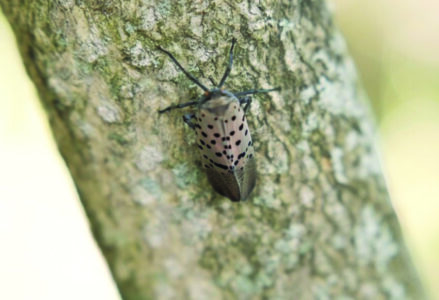Gauging the greenery

Andrea Denham, assistant director of the Upper Peninsula Land Conservancy, looks at plants Saturday at the Vielmetti-Peters Reserve. A botany survey was taken on the 123-acre reserve to guide future management goals. (Journal photo by Christie Bleck)
 NEGAUNEE — A field guide came in handy on Saturday when professional and amateur conservationists performed a botany survey at the Vielmetti-Peters Conservation Reserve in Negaunee Township.
NEGAUNEE — A field guide came in handy on Saturday when professional and amateur conservationists performed a botany survey at the Vielmetti-Peters Conservation Reserve in Negaunee Township.
The reserve was donated by the Vielmetti-Peters family in 2016 to benefit the public and the ecosystem, and to act as a demonstration area for sustainable forestry practices.
The reserve has a wide variety of habitats that include Midway and Spring creeks, plus it contains habitat openings as well, with quaking aspen making up one area.
Kathy Peters, who also donated adjacent land in Marquette Township for a conservation easement to the Upper Peninsula Land Conservancy, was an interested participant in the survey.
“I’ve never gone so slowly with a group of people back in woods,” Peters said.
She was on hand as the “fern expert.”
“I’ve done ferns for a while, but you know, if you don’t do them every year, you forget,” Peters said. “There are so many of them.”
Were the group to have sprinted through the reserve, though, they might have missed plants like cinnamon fern and ironwood.
The Vielmetti-Peters Reserve is different from other protected areas where certain practices aren’t allowed.
To be considered a reserve as opposed to a preserve, timber harvests are managed to mimic natural processes like lightning fires and wind throw. Timber sales also support the UPLC, based in Harvey, which manages the site. For example, proceeds help maintain trails like those found in the 123-acre Vielmetti-Peters Reserve.
And those trails contain a wide variety of botanical specimens.
“Every 10 feet, we’d be like, ‘Here’s another thing. Here’s another thing. What’s that?'” said Andrea Denham, UPLC assistant director.
So, what were some of the “things” they discovered?
“There’s a ton of jewelweed back there,” Denham said. “There was some snakeroot that we found, bluebead lilies.”
There also was a spot with water arum, which has glossy green, arrowhead-shaped leaves.
An unusual find was twisted stalk, a type of wildflower that has berries and a stem with distinct sharp kinks that give it a crooked look, hence its name.
I’ve done ferns for a while, but you know, if you don’t do them every year, you forget. There are so many of them.
— Kathy Peters
“Fern expert”
Nearby was another unique plant — a carnivorous one that can trap and absorb insects.
“There’s a pitcher plant whose flower was eaten,” Denham said. “Deer love eating pitcher plant flowers.”
The Saturday survey, though, wasn’t a one-and-done deal.
“We’ll take the survey at different times in the year,” Denham said. “We’ll probably try for at least one a year for a while, and once we have a list compiled, we can then take that list and compare it against the Floristic Quality Index for this type of ecosystem.”
Each plant is given a rating based on quality, she said.
Trees are included as well.
“It gives us an indication of how healthy the forest is, and as we go along and we go on surveying, we can watch if the Floristic Quality Index starts lowering,” Denham said. “Maybe we’re starting to see the effects of climate change. Maybe it’s that the water upstream is not doing as well, so we can kind of track the way is forest changing and adjust our management plans based on that.”
Denham said has been working with Northern Michigan University’s Outdoor Recreation Leadership and Management Program, which has a class that involves designing trail signs. In fact, last winter a group of students designed four signs for different parts of the reserve’s Waterfall Trail.
She will work with students again in the fall.
“The first semester will be their guided hiking class where they learn how to come up with a guided hike — an interpretive hike — for the public,” Denham said. “So, they’ll be doing that here, and then in the winter, they’ll be coming back here and designing more signs.”
Those signs will educate visitors about things like the reserve’s history and bedrock, she said. Also, about $3,000 was raised from the Over the River and Through The Woods 5K trail race on May 20, with a large portion of the proceeds going toward the production and placement of the students’ signs.
The reserve is open to the public, although visitors are asked to engage only in low-impact, non-motorized activities like hiking, wildlife observation, skiing and photography. Hunting is allowed with written permission from the UPLC. The reserve is for daytime use only, with no camping, fires or pets allowed.
People can help complete marking trails at the reserve from 10 a.m. to 1 p.m. June 30. Participants may park at the end of Brickyard Road in Marquette Township.
For more information, call the UPLC, located at 2208 U.S. 41 South, at 906-225-8067 or visit www.uplandconservancy.org.
Christie Bleck can be reached at 906-228-2500, ext. 250. Her email address is cbleck@miningjournal.net.




